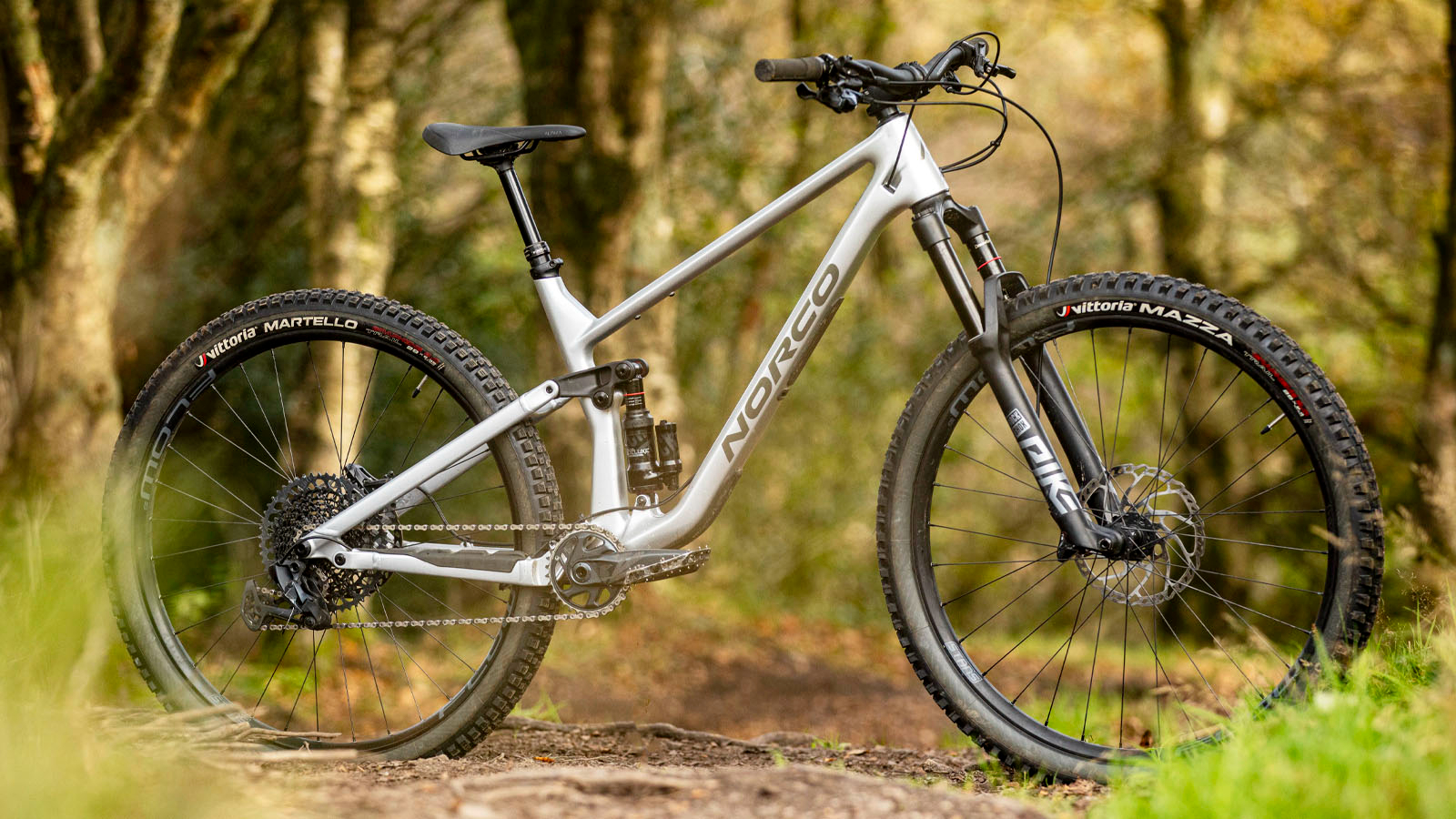
First launched in 2016, Norco’s Optic can lay reasonable claim to being one of a handful of bikes that defined the downcountry category. For those that don’t know (or care), this is a category blending the first half of downhill with the second of cross country to pigeonhole more downhill-focussed bikes that are also optimised to climb and cover distances efficiently.
In the case of this Canadian designed Optic C2, it means the kind of geometry that isn’t out of place on an enduro rig, with the rear travel of an XC or marathon bike.
The basic Optic vision and other short-travel trail bikes like it (Santa Cruz’s Tallboy or Yeti’s SB120 LR spring to mind) is maximum fun from minimal travel. So, even with just 125mm of rear suspension, it’s all about ditching any XC racing or marathon ambitions to ramp up trail thrills and deliver a visceral high-octane ride. Reduced travel being the gateway to reactive and responsive handling to really sense terrain feedback yet remaining stabilised enough by longer/slacker geometry to rip descents without ripping holes in fancy riding clobber (that’s also presumably halfway between Lycra shorts and motocross trousers).
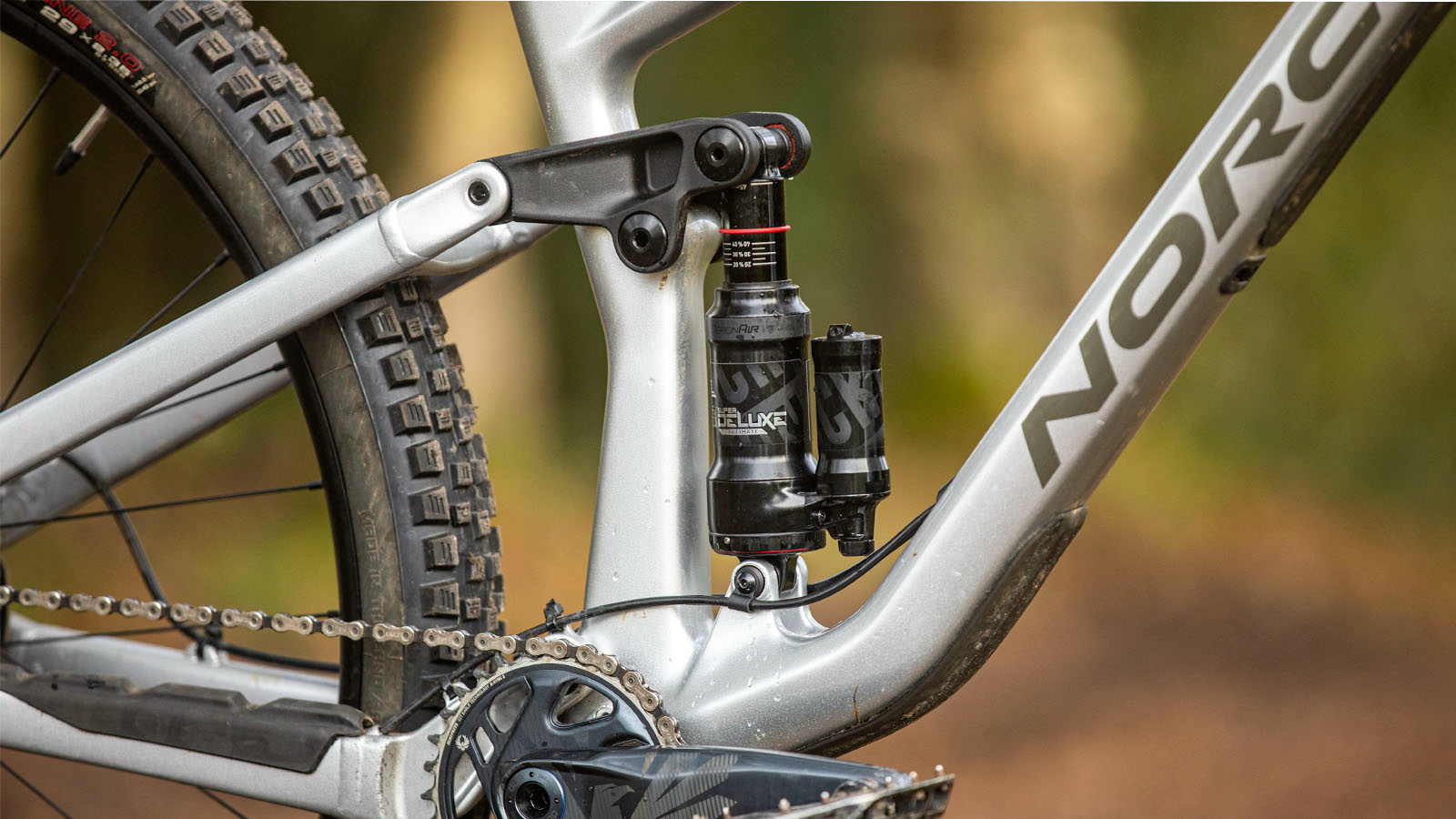
Design and geometry
As Optic moved through frame generations, like many others in the last few years, front-end length grew significantly. Reach is now around 20mm longer over the previous generation with the large-sized carbon front triangle extending to 480mm. This might not be massive compared to the current enduro bike crop, but few shorter travel bikes have such stretched out rider positions.
Norco also goes the extra mile with frame shape to ensure all riders get the same intended handling balance by matching longer front ends with progressively longer chainstays. Called ‘Ride Aligned’, this concept trumps many brands in this department and the Optic’s (aluminum) chainstays grow in 5mm increments from 425mm on size S to 440mm on XL.
There’s also a welcome (much steeper) 76-degree seat angle for a pedaling position that centers rider weight even climbing the steepest (most horrible) climbs. Feet and hips sit sunken and stable too, thanks to a 37mm BB drop that yields a 336mm static height, even with chunky Vittoria tires. There’s decent rear stay mud clearance to handle mud and clag even with thicker and grippier enduro-width tires too.
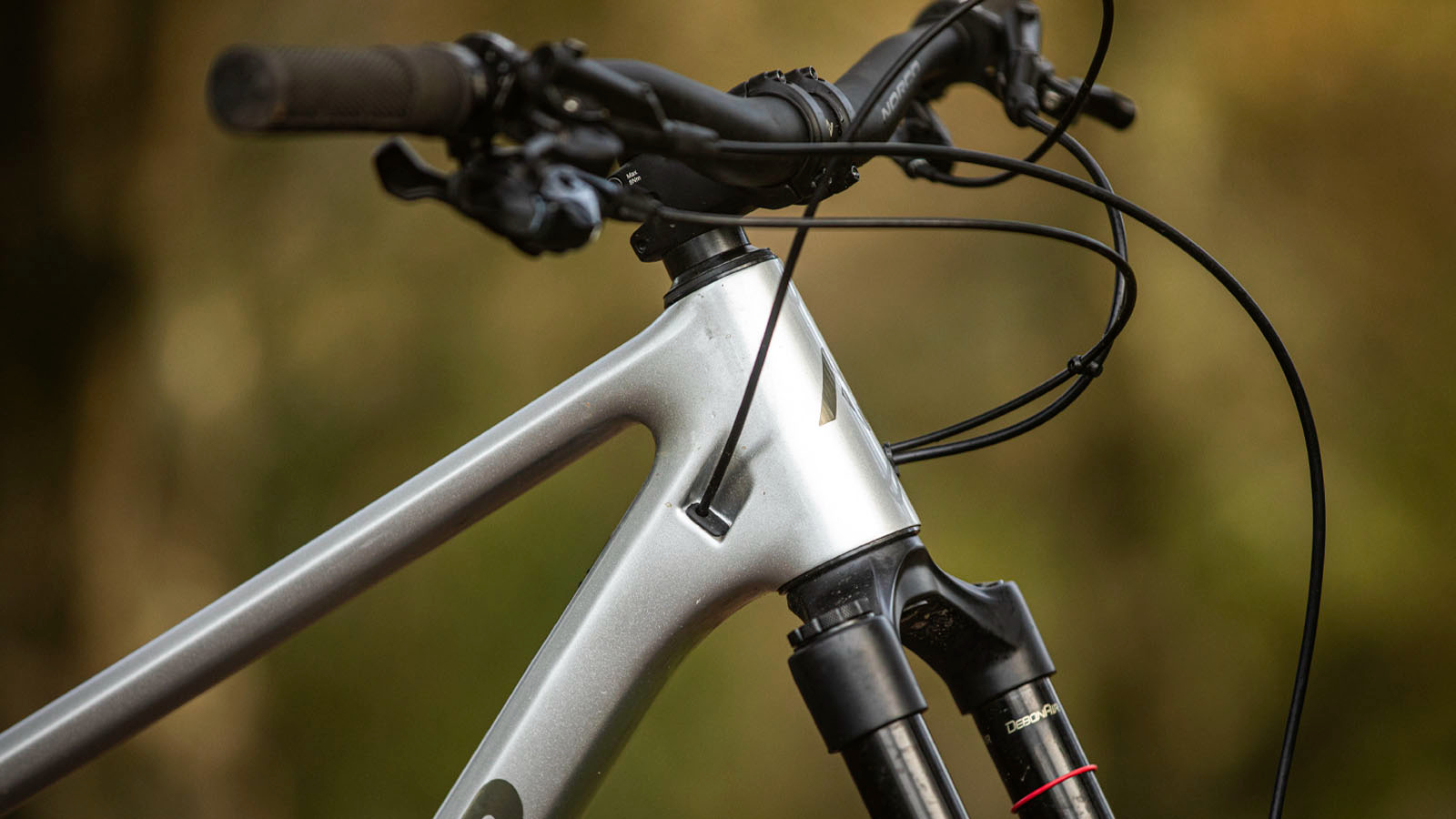
Clean lined with a low standover, the Optic has internally routed cables clamped in a downtube housing to quieten before tipping along chainstays that lead to a Horst link pivot. This pivot makes the Optic a four-bar suspension design and affords more ability to tune anti-rise to keep the suspension active under braking. The stays also use a UDH hanger that’s easy to source (and can accept SRAM’s swanky new Transmission drivetrain) with effective chainstay padding to silence chain slap.
I’ve got this far without mentioning the one thing that probably immediately caught your eye. Yep, that RockShox shock is indeed orientated ‘upside down’, and like the look of it or not, the simple reason is Norco wanted a reservoir shock with extra oil volume for extra DH performance and had to flip it to clear the downtube under compression. The frame still affords room for a full water bottle as well as bolts under the top tube to stash a tube and tool wrap without scuffing the paintwork.
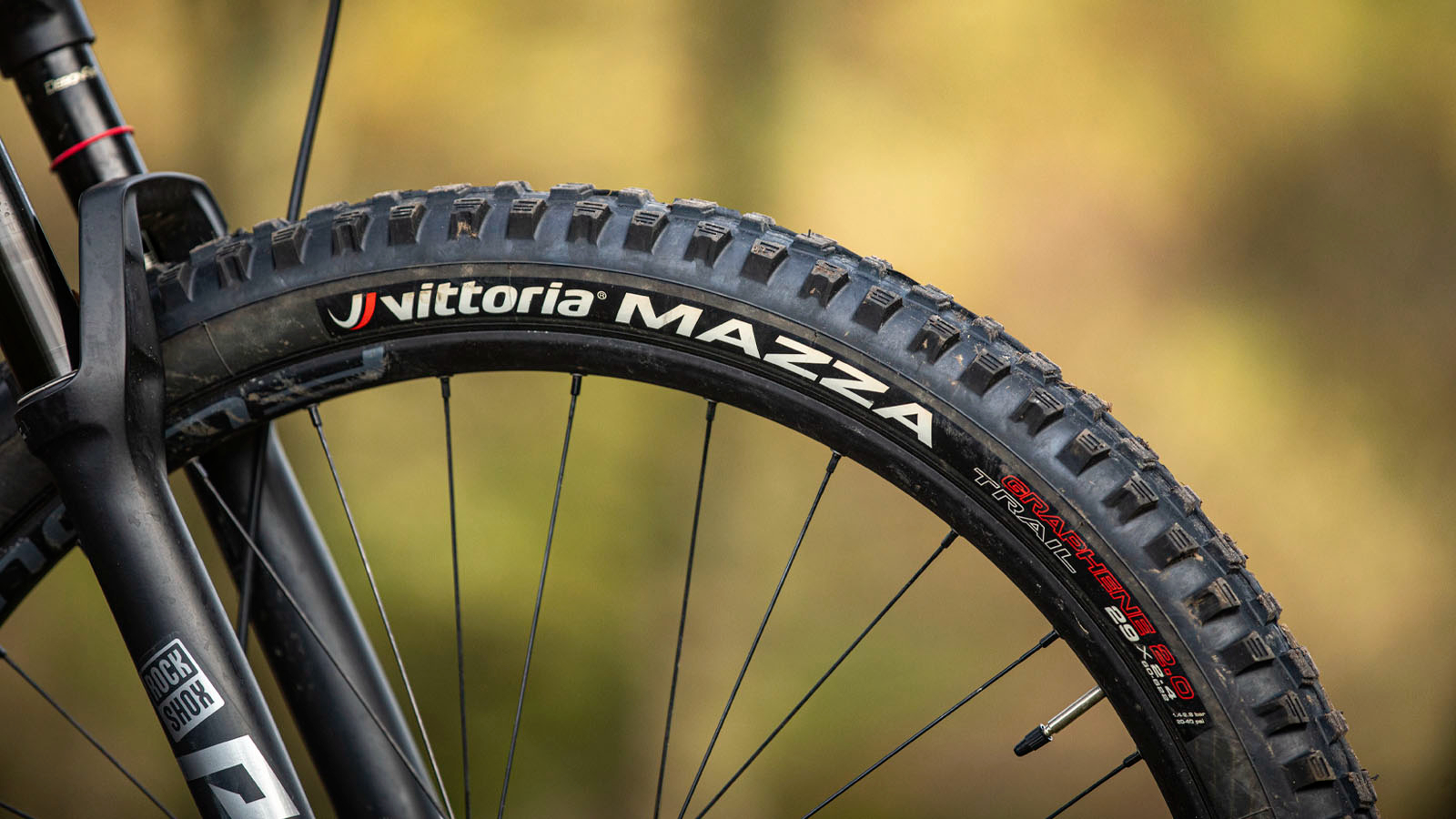
Components and build
The DH-spec shock mentioned is such a key Optic feature that Norco sees the top-spec RockShox SuperDeluxe Ultimate as so critical to performance, it (or a Fox reservoir-ed alternative) comes stock on all Optics, regardless of price.
This custom-tuned shock spins on sealed bearings at the upper two-piece rocker where most rotation occurs and is a bit special. Norco describes it as, “supple for the stuff you see comin’, but the precision kinematics make 125mm feel like a whole lot more when things get rowdy”, and for once, it’s marketing hyperbole I’m totally in tune with.
Balancing the 125mm is a RockShox Pike Select + fork with 15mm more travel. It isn’t the latest Charger 3 version with buttercups or lower leg air release valves, but does use the latest SKF wiper seals for reduced friction.
To save cash, the Charger RC damper only has external low-speed compression and rebound adjustment. The 140mm travel offers decent control and support, but pricier forks you might expect for this cash offer better off-the-top sensitivity and are subtly smoother and calmer.
Bolted to the Pike’s steerer are not very glamorous own-brand Norco aluminium bars and a 50mm stem, but at least the grips are popular after-market choice DMR ‘Brendog’ Deathgrips. (Not quite as popular with me though seeing as I don’t personally like the undamped, thin and uncomfortable feel).
Norco’s website lists an E*Thirteen bar and 45mm stem for C2, so maybe the spec here was a result of some supply issues, but the 50mm stem didn’t steer quickly enough either with the 42mm offset fork and slack-ish head angle, so swapped it for a 40mm. With stubbier stem, the fork rake gels nicely with the 65° head angle and wide handlebars for intuitive steering and a good balance between stability and reactiveness.
Another kit change from advertised was Shimano MT520s instead of SRAM DB8 brakes. But with beefier four-piston calipers, these were some of the grabbiest/powerful I’ve used in years, and so on/off in fact, even with 180mm rotors, it took a while to adjust when riding, but, still, that’s a much better problem than not enough stopping power.
Another good spec choice are Stan’s enduro-level Flow S1 wheels. They’re wide enough for good tire stability at lower pressures and stiff and tough enough to really take a thrashing on a bike with less cushioning like this. S1s aren’t the lightest and the DT Swiss freehub a bit slow to engage sneaking half-cranks on janky singletrack or awkward climbs, but this doesn’t really impact on the overall sense of zip or feel like dragging excess weight around, so I reckon they’re a good compromise.
Whether it’s a cost saving measure or a genuine performance choice, one compromise too far were the Vittoria tires and I don’t reckon the Mazza/Martello rubber combo here has as much grip or damping as many other brands on my local trails. They feel scratchy in the dry and downright nervous in the wet and would be my first change on the Optic; you’d be looking at around $100 extra to do the same if the bike shop isn’t willing to swap at time of purchase.
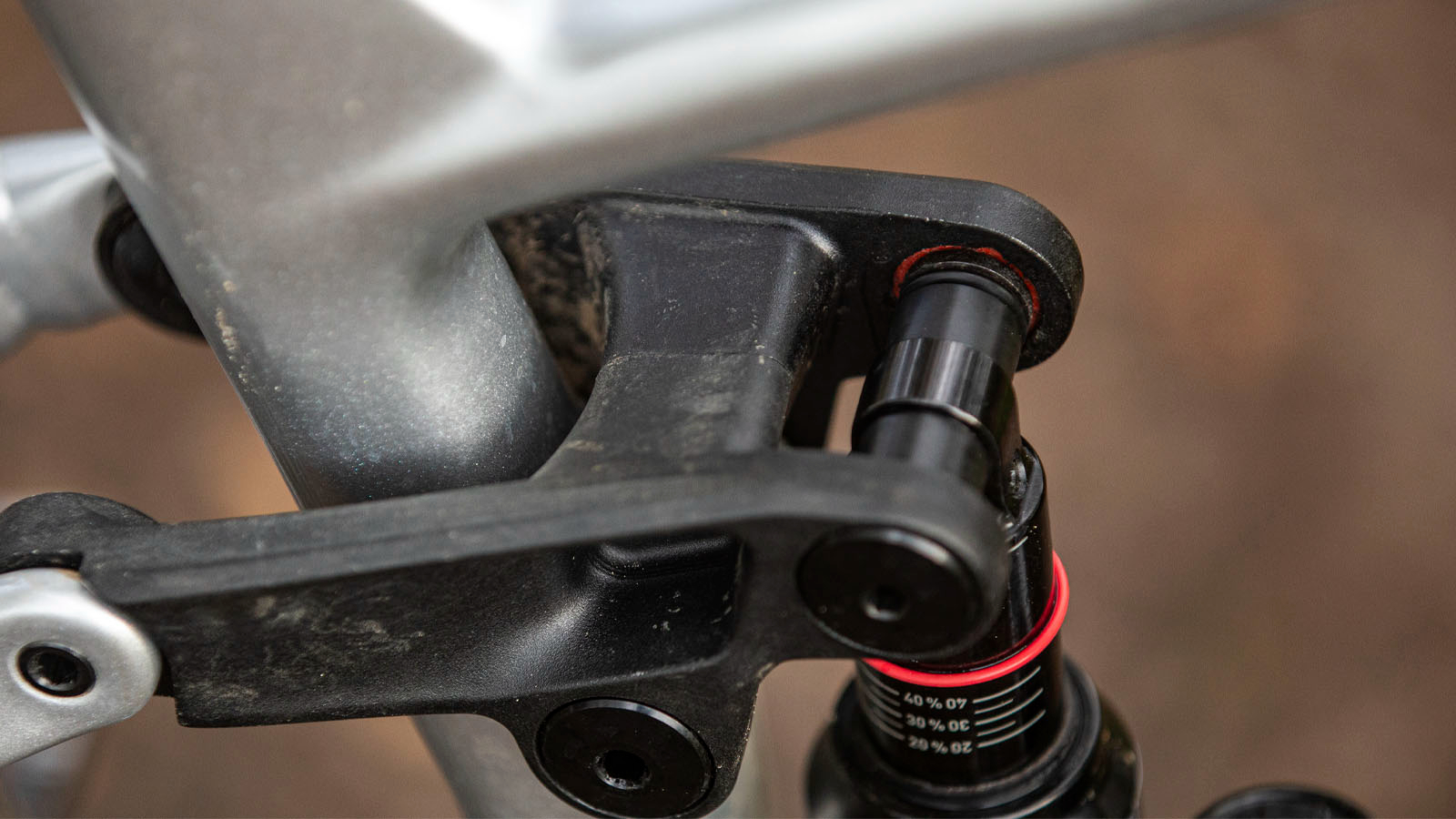
Ride and performance
With low BB, kicked out front wheel and Norco’s specially-tuned shock, the Optic really eggs you on. It pedals and sprints effectively and is more planted and stable than you’d imagine a 125mm travel bike ought to be blasting downhill. With a lively, racy attitude it’s the kind of bike that feels taut and on its toes, so a bit like a boxer about to land a punch, I found myself twitching and swinging it about from side to side between thighs while rolling along just for the hell of it.
Stiff and solid enough, the Optic C2 can stand firm on most trails right up to seriously steep, so long as the pitch isn’t combined with big drops and hits. That’s not to say the Super Deluxe shock custom valved for extra high-speed compression damping can’t handle big hits; it’s just as a shorter travel bike it’s slightly more restricted at both ends (even with the 15mm more travel Pike) absorbing bigger impacts and controlling and stabilizing fore and aft chassis movements over really rough sections.
Being not much lighter than many enduro bikes that offer this isolating effect either, some riders might question what exactly the Optic has got going for it. Aside from pedaling and climbing with extra efficiency here, I reckon more travel can be a double-edged sword in that it takes away precision and feedback that enhances the ride sensation on the best trails.
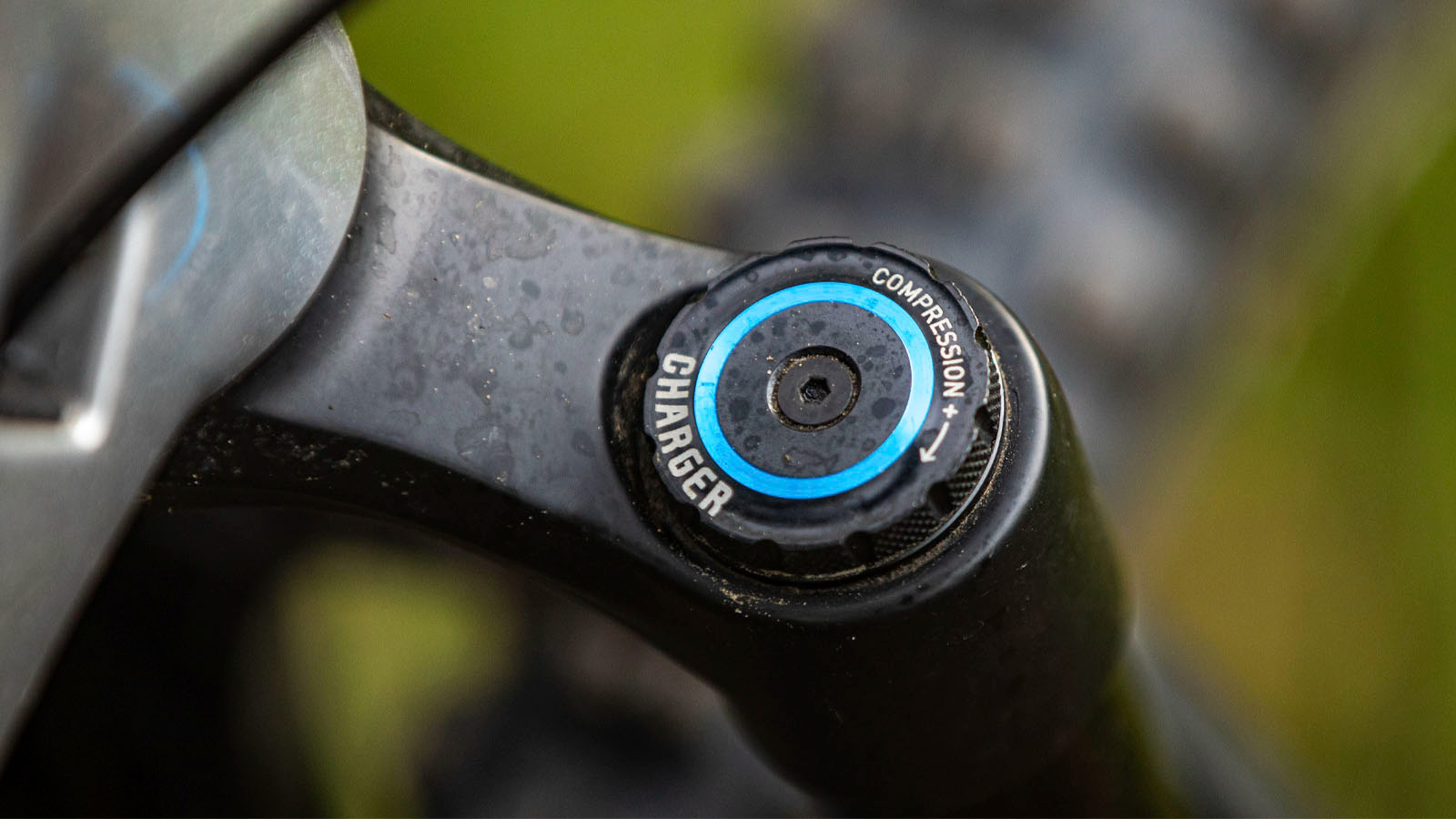
Norco’s bike straddles the tightrope of travel and technical capability just about right. For sure, the absolute limit of hard charging and still expecting to grip/get away with it is slightly lower than with a 170mm bike’s worth of get out clauses, but that adds extra excitement, pump and pop, and while the Optic is constantly stimulating senses through palms and soles, it rarely gets so edgy you can’t hammer along and push your limit.
The key to the control is a balance of geometry that feels just right and a damping tune so good that even with just over 30 percent sag (that feels a bit firm in the car park squish), get going off-road and the back end laps up small repeated hits, even when cruising, and packs enough control to never feel flustered at top speed.
There’s also a ton of smooth support here to push against to punch through berms and dips and the Optic never gets so unsettled it pitches rider weight about unnecessarily. On top of being supportive, there’s a fluidity around sag to the rear suspension that allows the rear tyre to hover and float over chop and small bumps so the Optic maintains pace over rough ground without ever being fazed. All this attitude ends up with you needing to grip pretty hard through the roughest trail sections if you ride proper DH tracks, but you absolutely can do that if you’re prepared for a bit more jiggling.
A couple of negatives are how the 150mm seatpost drop on a size Large won’t be enough for taller riders and the Pike fork occasionally feels less sensitive than the top-tier kit I’m usually spoilt by/you might expect for over 5K. But because the fundamentals of handling, rider position and rear suspension are so sorted, the fork performance impacts less than on many similar bikes.
A spec choice that’s much worse than the few quid saved on the Pike are the Vittoria tires. I see many people using them and praising them, but I can’t compute – they feel nervous, twitchy and not planted on the ground and throw any moisture into the equation and things get really sketchy fast, so I’d definitely trade a bit of Vittoria’s rolling pace for the extra control with plenty other tire brands.
While it’s perfectly content getting you about efficiently and comes over like every bit the competent buttoned-down short travel trail bike, release the grabby brakes and the Optic reveals a special swagger that has you pushing harder. And when compressions, turns and jumps simply don’t scrub off as much speed on mellower trails as longer travel rigs, it’s a total blast too. Just be aware you might ended up scaring yourself with the speed generated without the acres of travel safety-net, but isn’t that why we all do it in the first place?
Verdict
With sublime rear suspension, the Optic is still one of the best downcountry bikes around. Less carbon parts for more dosh and a swap from sorted Schwalbe to vague Vittoria tires mean 2023’s kit list isn’t as good value as previously, but the Optic C2’s spirit still shines through.
As well as an efficient trail bike, this is one of those rare breeds that transcends categorization, specification and suspension numbers. Like a bad influence mate at a rave, it might just provoke you to reckless or inappropriate behavior, but push the limits of excessive trail speed or technicality too far, and just like all the best buddies, it’ll also have your back if things get hectic.
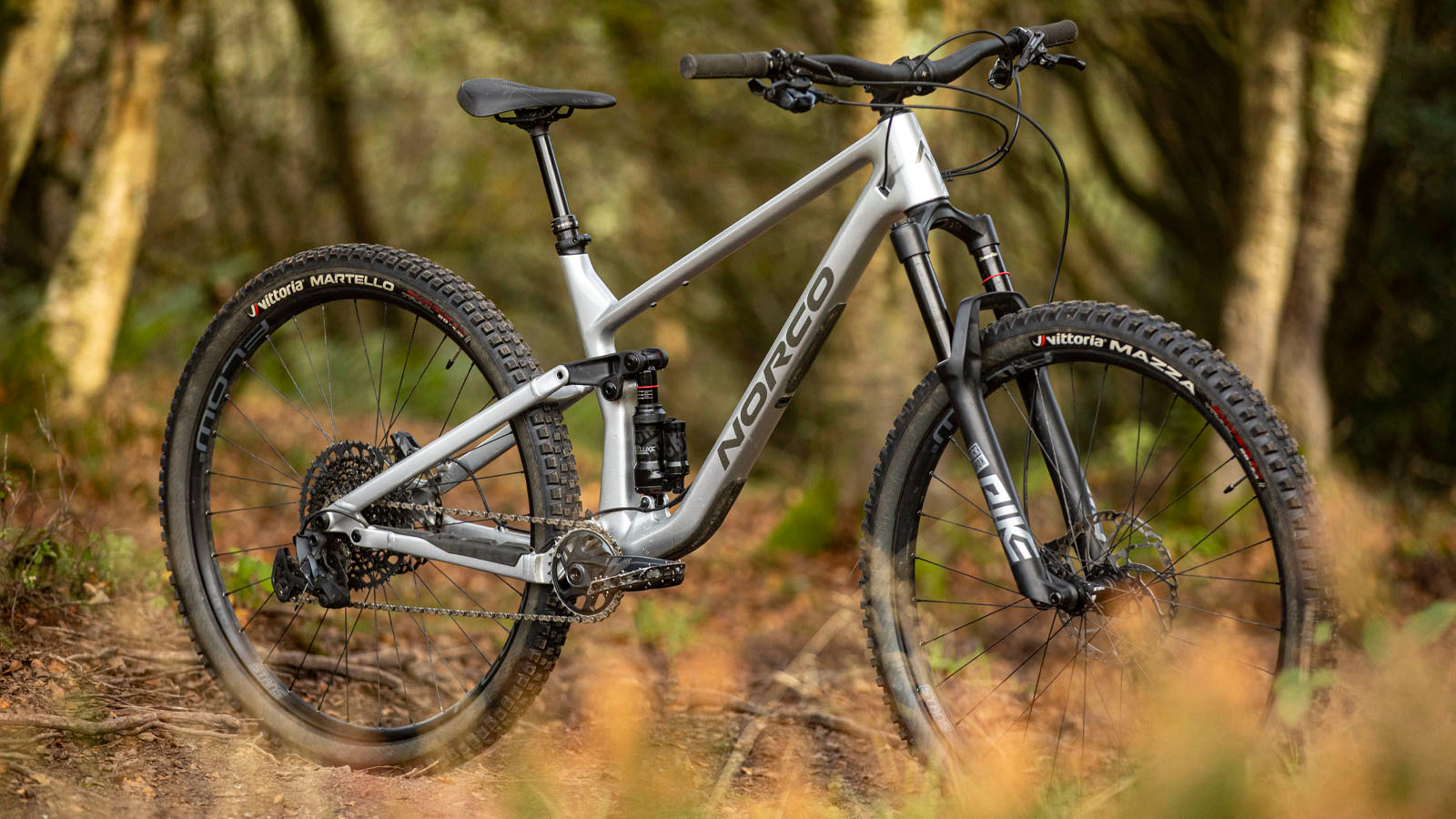
Test conditions
- Terrain: Local hand-cut trails, armoured trail centre, enduro tracks, small jumps
- Conditions: Slippery/greasy through to bone dry and dusty
- Temperature: Summer and Autumn temps, 50 to 72 F (10-22 C)
Tech specs: Norco Optic C2 SRAM
- Price: $5,499.00 / £5,199.00 / €5,699.00
- Frame: Norco Carbon/alloy stays 125mm travel
- Fork: RockShox Pike Select Plus 140mm
- Shock: RockShox SuperDeluxe Ultimate DH
- Head tube angle: 65-degrees
- Seat tube angle: 76-degrees effective
- Reach: 480mm (size large)
- Weight: 14.1kg / 31.1lb (large tested)
- Drivetrain: SRAM GX Eagle Dub 12-speed. 10-52T cassette
- Brakes: Shimano MT520 200mm rotor front/180mm rotor rear
- Wheels: DT Swiss 350 Hubs, Stan’s Flow S1 rims
- Tires: Vittoria 4C Mazza G2 front 29x 2.4in, Vittoria Martello G2 rear 29x2.35in
- Seatpost: X-Fusion Manic 150mm drop
- Saddle: Fizik Alpaca Terra Wingflex
- Bars: Norco alloy 780mm
- Stem: Norco alloy 50mm
- Rival products: Transition Spur, Yeti SB120, Specialized Stumpjumper







